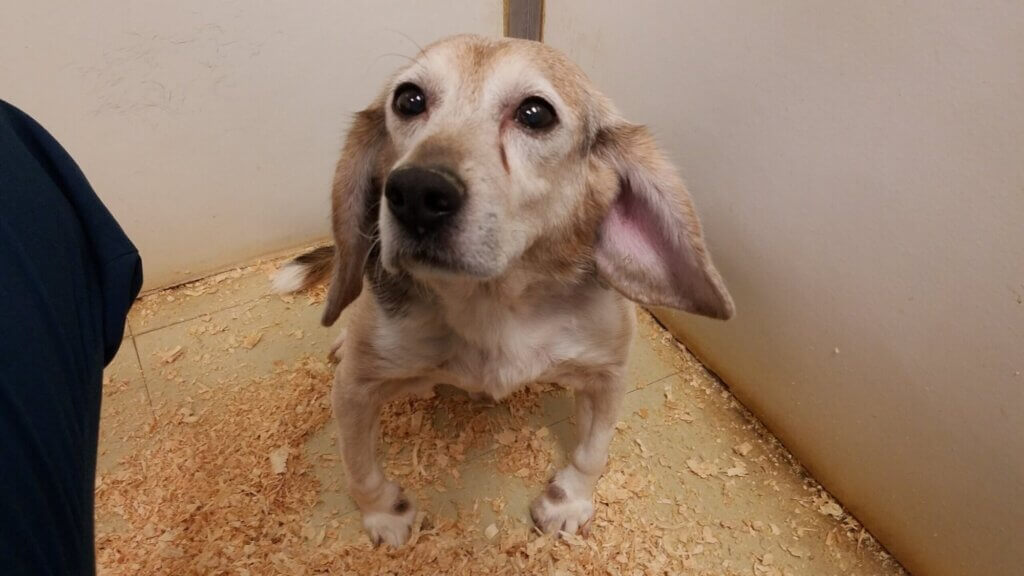Non-Animal Alternatives

A Historic Pivot Toward Ending Animal Testing—And the Political Force That Helped Spark It (The Trump Administration)
In what can only be described as a pivotal breakthrough for both ethics and science,…
The Sustainable Action Now Truth About Animal Testing and Why We Must Act Now for Bo and Docker
At Sustainable Action Now, we believe in taking action for a better, more compassionate world….
A Win for Animal Rights: Harvard’s Cruel Monkey Experiments Defunded — But the Fight Isn’t Over
At Sustainable Action Now, we believe that real change happens when awareness meets action—and this…
Internal Turmoil at the Bureau of Land Management Highlights Broader Climate Crisis Concerns
In yet another sign of instability within the federal agency responsible for managing America’s public…
Stop U.S.-Funded Cruelty Abroad — Support the CARGO Act Now
At Sustainable Action Now, we are committed to exposing the hidden injustices that undermine both…
Sustainable Action Now Presents SafariLIVE Sunset – 11 May 2025 – Bringing You Closer to Nature, One Step at a Time
At Sustainable Action Now, we are committed to uniting people and the planet through awareness,…
Millions of animals are used and killed in scientific procedures every year.
- We estimate that at least 192.1 million animals were used for scientific purposes worldwide in 2015. This is the world’s most reliable figure to date. This includes nearly 80 million experiments on animals as well as millions of other animals who are killed for their tissues, used to breed genetically modified animal strains and bred but not used.
- We estimate that the top 10 animal testing countries in the world are China (20.5 million) Japan (15.0 million), the United States (15.6 million), Canada (3.6 million), Australia (3.2 million), South Korea (3.1 million), the United Kingdom (2.6 million), Brazil (2.2 million), Germany (2.0 million) and France (1.9 million), in that order.
- In 2015, an estimated 207,724 tests using dogs and 158,780 tests using monkeys were conducted.
- The top 10 users of dogs were: China, the United States, Canada, South Korea, Japan, Australia, Brazil, the United Kingdom, Germany and India.
- The top 10 users of monkeys were: the United States, China, Japan, Brazil, Canada, the United Kingdom, France, Germany, India and South Korea.The latest report from the European Commission shows that 8.8 million experiments were conducted on animals across the EU and Norway in 2020.
- For the first time, the 2020 statistics do not include the UK since it left the EU at the beginning of 2020. Since the UK was the biggest user of animals in the EU, this has had a big impact on numbers
- The total number of uses decreased by 7% in 2020 compared to the previous year (excluding the UK from 2019 to make the comparison fair).
- Despite increased public demand for a reduction in animal research, there has been little change (approximately 1% year on year) in the 20 years prior to 2020. There was a more significant drop in 2020 but this could be accounted for by laboratory shutdowns as a result of COVID-19.
- According to the EU reports, the Germany conducted the highest number of animal uses in Europe in 2020 (1.9 million). France was the second highest user completing 1.6 million uses in 2020, while Norway was third with 1.4 million uses that year.
- There were 14,096 uses of dogs in 2020 with France (4,079 uses), Germany (2,560 uses) and Belgium (1,519) being the top three users.
- There was a total of 7,316 uses of monkeys across the EU in 2020 with France (3,996 uses), Germany (2,031 uses) and the Italy (504 uses) being the top three users.
- Out of the total number of animal uses in the EU in 2020, 38% were for basic research purposes while only 16% were required by regulators.
- Experiments are still being conducted for regulatory purposes in the EU where there are valid non-animal methods available.
- In 2020, there were 4,070 skin irritation tests, 491 eye irritation tests, 38,024 skin sensitisation tests, 24,139 pyrogenicity tests and 273,955 batch potency tests on mice to meet the requirements of human medicines legislation (a large proportion of which were likely to be tests for botox products).
- According to the latest Government figures, a total of of 2.76 million (2,761,204) procedures on animals were completed in Great Britain in 2022.
- Of these, 1.25 million (45%) related to the creation or breeding of genetically altered animals who were not used in further experiments.
- The remaining 1.51 million (55%) were actual experiments on animals, which included 457,169 experiments (31%) that even the researchers considered had caused moderate or severe suffering to the animals involved.
- There were 20 severe experiments on dogs, up from zero in 2021.
- Out of the total number of procedures conducted in GB in 2022, only 10% were required by law – the rest were conducted voluntarily.
- A total of 4,122 experiments were conducted on dogs in 2022, including 4,014 experiments on beagles and 108 experiments on other breeds.
- A total of 2,197 experiments were conducted on monkeys in 2022, including 72 experiments on marmosets and tamarins, 2,024 experiments on cynomolgus macaques and 101 experiments on rhesus macaques.
- In 2022, 91% of the monkeys used for the first time in experiments were imported from Africa or Asia.
- There was a significant increase in Lethal Dose 50 (LD50) and Lethal Concentration 50 (LC50) tests from 11,758 tests in 2021 to 12,651 in 2022 (up 8%). These cruel and outdated tests are designed to find the dose or concentration of a substance that kills half of the test animals.
- 2022 saw 248 skin sensitisation and 3,198 batch potency tests on mice (a large proportion of which were likely to be tests for botox products). While these are significant decreases compared to the previous year – particularly for batch potency testing – these are areas in which animals should not be used at all due to the availability of validated replacements. See more.
- We celebrate that, for the first time, zero skin irritation tests on animals were conducted in GB in 2022. Last year we celebrated that, for the first time, zero eye irritation tests on animals were conducted on animals in 2021. Sadly, 2022 saw three eye irritation tests on rabbits, demonstrating that this use has not ended completely.


A recent study by Transparency Market Research (TMR) sheds light on the shifting dynamics of the global in vitro toxicity testing market. The study underscores the growing competition focused on achieving faster and more accurate outcomes, a trend driving the adoption of non-animal testing methods.
We’re working closely with Eurogroup for Animals to reduce animal testing requirements in European laws. Ensuring more effort is put into developing legally accepted alternatives. We’re providing funding to InterNICHE. Helping their work on identifying and promoting the use of alternatives to animals in education. We also participate in the World Congresses on Alternatives and Animal Use in the Life Sciences.
We promote the idea of animal replacement through our resources. Our report outlines the potential for implementing alternatives to the use of lab animals.
Follow these links to find out more about replacing animals in testing and research:
- Animal Free Research UK – Replacing Animals in Medical Research
- Altweb – Alternatives to Animal Testing Website
You may also like to have a read of our blog post on what we’re doing to help wild animals used in vaccine tests.





Why TO Trust ALTERNATIVE METHODS
The shift towards non-animal testing methods signifies a positive step forward in the fight against animal cruelty in research. With over 100 million animals suffering and dying annually in various forms of testing and experimentation in the U.S. alone, this transition is both significant and necessary.
Types of non-animal methods
Non-animal methods are often cheaper, quicker and more effective
Cell cultures are a cornerstone of modern research, offering a versatile platform for studying both human and animal cells in controlled laboratory environments. Scientists have achieved remarkable feats, coaxing cells into forming intricate 3D structures, including miniature human organs. These structures, known as “organs-on-chips,” provide a more lifelike model for testing new therapies, replicating biological and disease processes, and assessing drug metabolism. Organs-on-chips have been developed to mimic vital organs such as the lung, heart, kidney, and gut, with the ultimate aim of creating a comprehensive “human-on-a-chip” model. Cell cultures have played a pivotal role in groundbreaking advancements in fields like cancer research, sepsis, kidney disease, and AIDS, and find routine application in chemical safety testing, vaccine development, and drug discovery.
The use of human tissues, sourced from both healthy volunteers and individuals with specific diseases, offers a more relevant approach to studying human biology and pathology compared to animal testing. These tissues, obtained from various sources including surgical procedures (e.g., biopsies, cosmetic surgery, and transplants) and post-mortem examinations, have facilitated the development of innovative models such as reconstituted human skin and eye tissues, replacing traditional animal-based tests like rabbit irritation assays. Post-mortem human tissues, particularly brain tissue, have provided invaluable insights into brain regeneration, and the pathophysiology of conditions like Multiple Sclerosis and Parkinson’s disease.
Advancements in computer technology have enabled the creation of sophisticated models that simulate aspects of the human body with increasing accuracy. Computer models spanning the heart, lungs, kidneys, skin, digestive system, and musculoskeletal system are already in existence. These models facilitate virtual experiments based on existing data and mathematical algorithms. Additionally, data mining tools enable predictions about substance hazards by analyzing data from similar compounds. Computer modeling represents a powerful tool for reducing reliance on animal testing and accelerating scientific discovery.
Technological innovations have revolutionized the study of human volunteers, offering safe and non-invasive methods for investigating various aspects of human physiology and pathology. Brain imaging technologies allow researchers to visualize and monitor brain activity, providing insights into the progression and treatment of neurological disorders. Techniques like microdosing enable the evaluation of drug behavior in humans using minimal doses of radio-labeled compounds, measured with high sensitivity instruments like accelerator mass spectrometers. Additionally, less high-tech studies focusing on nutrition, drug addiction, and pain management can be conducted with the consent of human volunteers, offering valuable insights while eliminating the need for animal experimentation. The ability of human volunteers to articulate their experiences adds a crucial dimension to medical research, further emphasizing the importance of advancing non-animal testing methodologies.







The World Congress on Alternatives and Animal Use in the Life Sciences
The reported numbers of laboratory animals produced or used in Great Britain, the Netherlands, and Switzerland all show the same trends (peaking in the 1970s and falling after that). Only limited numbers (no estimates for the number of rats and mice used) are available in the USA. Still, the available American data on other laboratory rodents and rabbits shows a similar peak in laboratory animal use in the 1970s, followed by a steady fall. In 2020, the use of hamsters, guinea pigs, and rabbits in the USA was around 25% of their use in the 1970s.
Volunteer Studies
Advances in technology have allowed for the development of sophisticated scanning machines and recording techniques that can be used to study human volunteers safely.

Margaret Anderson
Head of Laboratory Department

Mark Anthony
Senior Pathologist

Samantha Wood
Laboratory Technician
Medical breakthroughs using humans
- We are told that insulin therapy would not have been discovered unless animal researchers had removed the pancreas from dogs in the 1920s. But the important clues actually came much earlier from observations of human patients.
- Brain surgery in Parkinson’s patients identified the best place for Deep Brain Stimulation electrodes to be placed in the brain to improve symptoms, decades before the “discovery” in monkeys.
- Alois Alzheimer first described the main features of Alzheimer’s disease in 1906 by studying brain segments from patients after they had died.
- Human population studies led to the discovery that smoking causes cancer. Smoking does not cause cancer in mice and rats.
- An Australian doctor used himself in an experiment to discover the main cause of stomach ulcers. He drank a culture of bacteria and became sick before curing his symptoms with antibiotics.
- A German chemist tested the effects of aspirin on himself after an accidental discovery that it helped relieve pain in a patient with toothache.
- The anaesthetic effect of laughing gas was discovered when someone accidentally cut their leg while under the influence of the gas. An American dentist then confirmed the effects on himself while having a tooth removed.
Non-animal methods perform better than animal tests
- Crude skin allergy tests in guinea pigs and mice only predict human reactions 72% and 74% of the time, respectively. But approaches combining chemistry- and cell-based alternative methods have been shown to accurately predict human reactions up to 85% of the time.
- The notorious Draize skin irritation test in rabbits can only predict human skin reactions 60% of the time. But methods using reconstituted human skin are up to 86% accurate.
- Tests on animals to find out if chemicals or drugs may harm the developing baby can only detect 60% of dangerous substances. But a non-animal test using human stem cells has 93% sensitivity at detecting substances known to cause developmental problems.
- Cruel and unreliable shellfish toxin testing using live mice has now been fully replaced with a far superior analytical chemistry method that is better at protecting humans from shellfish poisoning.
The science relating to animal experiments can be extremely complicated and views often differ. What appears on this website represents Cruelty Free International expert opinion, based on a thorough assessment of the evidence.











